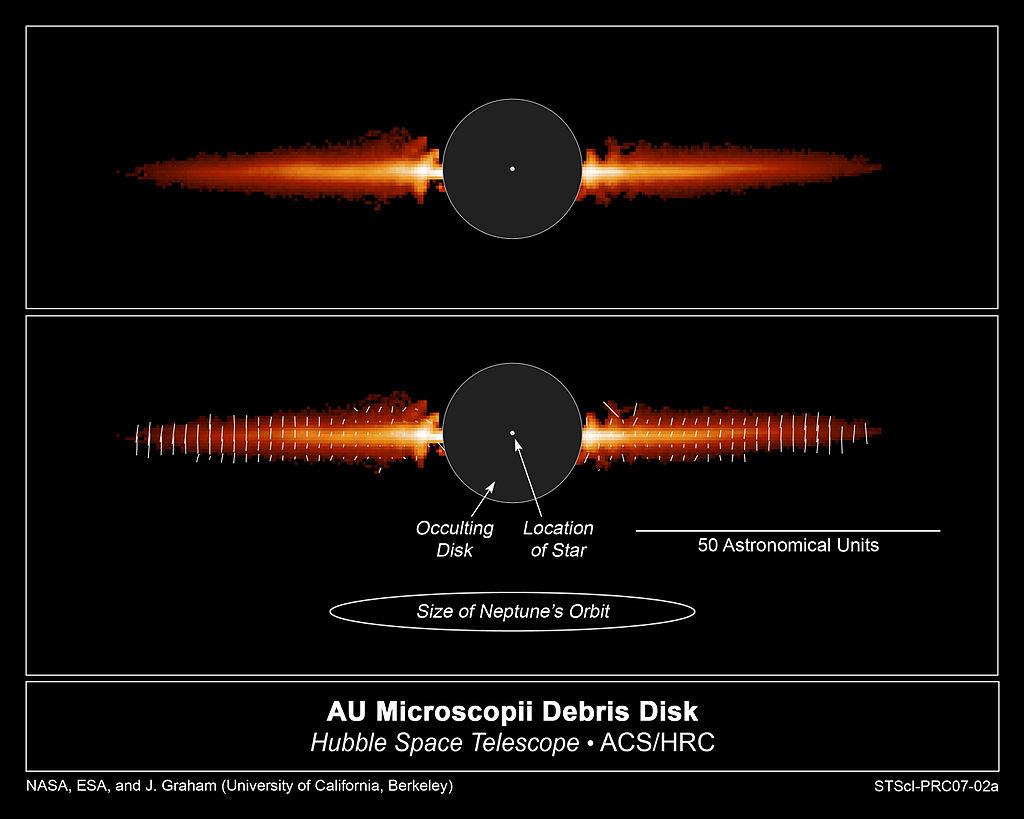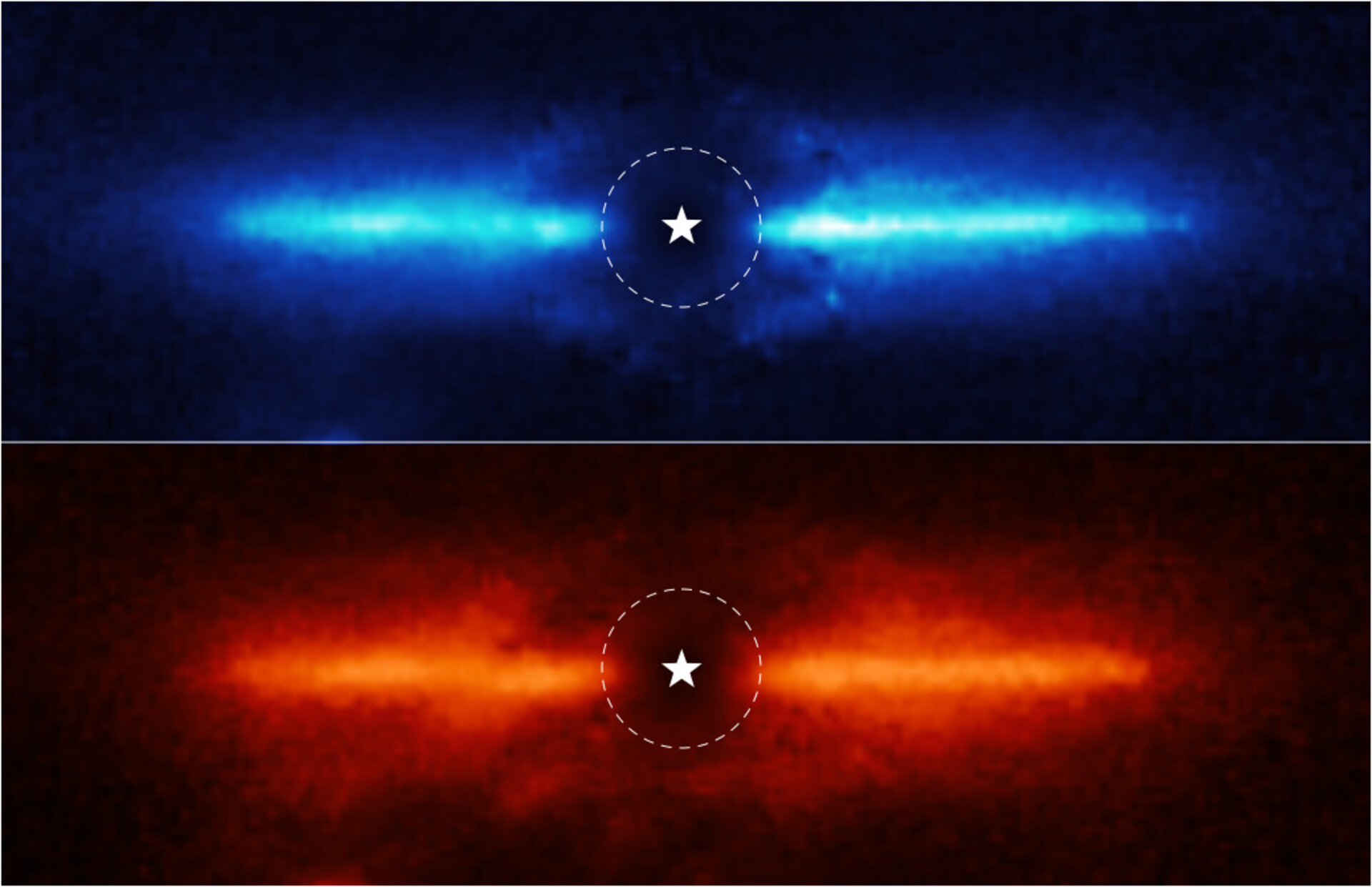The James Webb Space Observatory (JWST) photographed the dust disk around the AU star with a microscope. It consists of the remnants of planetary embryos.
AU Microscope Star System
The AU Microscope is a red dwarf located at a distance of only 32 light-years from Earth. This is a very young star. According to astronomers, its age is 23 million years, which is quite a bit by the standards of such luminaries (the average lifespan of red dwarfs is measured in hundreds of billions of years), but it is enough for them to obtain exoplanets. At the moment, astronomers have managed to find two worlds in this system. Their rotation periods are 8.5 and 19 days, and the masses are 20 and 11 times the mass of the Earth.

But the most interesting aspect of the system, nevertheless, is the dust disk surrounding the AU Microscope. It is made up of debris left after the collision of planetesimals — embryos that in the future may give rise to full-fledged exoplanets.
Dust disk images
Such dust disks are of considerable interest to astronomers. Their study helps to reveal the details of the formation of exoplanets. In total, JWST took two images of the disk around the AU Microscope — at a wavelength of 3.56 microns (blue) and 4.44 microns (red). The star marked the position of the star itself, its light was blocked by the coronagraph.

Analysis of the JWST images allowed scientists to establish that the diameter of the disk is 60 AU (about 8.5 billion km). It starts at a distance of 5 AU from the red dwarf. The image of the disk at a shorter wavelength is brighter. This suggests that it mainly consists of fine dust.
The next goal of the researchers is to search for giant planets (analogs of Jupiter and Saturn) in wide orbits around the AU Microscope. This is not such an easy task, since both the transit method and the radial velocity method are best suited for searching for exoplanets located near the star. But scientists hope that they will still be able to solve this problem.
According to https://www.esa.int
Follow us on Twitter to get the most interesting space news in time
https://twitter.com/ust_magazine

